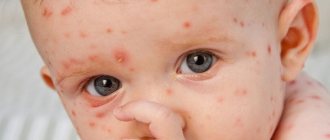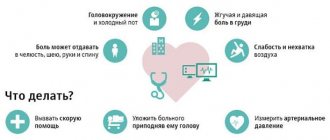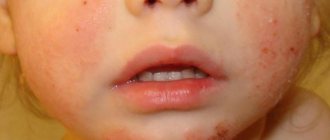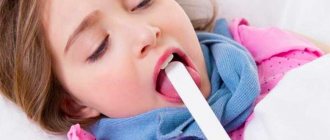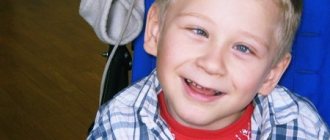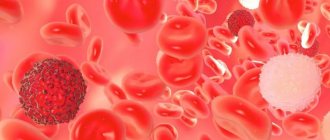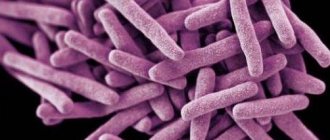Pneumonia or pneumonia is one of the most common acute infectious and inflammatory diseases in humans. Moreover, the concept of pneumonia does not include various allergic and vascular diseases of the lungs, bronchitis, as well as dysfunction of the lungs caused by chemical or physical factors (trauma, chemical burns). Pneumonia occurs especially often in children, the symptoms and signs of which are reliably determined only on the basis of X-ray data and a general blood test. Pneumonia among all pulmonary pathologies in young children is almost 80%. Even with the introduction of progressive technologies in medicine - the discovery of antibiotics, improved diagnostic and treatment methods - this disease is still one of the ten most common causes of death. According to statistical data in various regions of our country, the incidence of pneumonia in children is 0.4-1.7%.
Types of childhood pneumonia
Depending on the location of the inflammation, pneumonia can be:
- share;
- segmental;
- right-sided;
- left-handed;
- bilateral.
Based on their form, they distinguish between community-acquired (home-acquired), hospital-acquired and congenital pneumonia. The least common is atypical childhood pneumonia caused by mycoplasma. Pneumonia, characteristic of patients with immunodeficiency conditions, is classified separately.
The most common types of pneumonia are:
- focal bronchopneumonia;
- lobar pneumonia (pneumococcal);
- segmental (polysegmental) bronchopneumonia;
- interstitial acute.
Moreover, each type of pneumonia can be divided into uncomplicated and complicated. This form sometimes entails more serious diseases, such as effusion pleurisy, lung destruction, etc.
Depending on the duration of the disease, pneumonia can be:
- acute current (lasting up to 4 weeks);
- protracted (stated when the inflammatory process in the lungs continues for more than 4 weeks).
Any untreated pneumonia, especially in children under 3 years of age, becomes chronic. This form is characterized by irreversible changes in the bronchial tree and constant relapses.
Types of childhood pneumonia
Routes of infection and risk group
Pneumonia can develop in a child for various reasons, the most common of which are viruses and bacteria:
- gram-positive;
- gram negative;
- influenza viruses, adenovirus, parainfluenza.
In addition, the development of the inflammatory process in the lung tissue can be promoted by mycoplasmas, fungi, chest injuries, allergic reactions, and burns of the respiratory tract.
Risk group
Pneumonia rarely develops as an independent disease; most often it is a complication of untreated acute respiratory viral infections or other infections of a viral and bacterial nature. In most cases, children suffer from pneumonia, since their immune system is not fully formed and the body cannot resist pathogens. Predisposing factors to the development of pneumonia are chronic conditions or unfavorable living conditions, namely:
- advanced bronchitis and bronchiolitis;
- airway obstruction;
- allergic reactions;
- inhalation of chemical fumes, detergents, washing powder, house dust and mold;
- passive smoking - when parents smoke in the room where the child lives, who is forced to constantly breathe smoke;
- infrequent walks, hot dusty indoor air, mold damage to the walls of the apartment;
- vitamin deficiency, general exhaustion of the body due to frequent colds, long-term use of antibiotics or an unbalanced monotonous diet;
- chronic diseases of the nasopharynx and larynx - rhinitis, sinusitis, sinusitis, adenoiditis, tonsillitis, laryngitis.
Causes of pneumonia
Pneumonia is a complication of diseases such as bronchitis and bronchial asthma, laryngitis, pharyngitis, tonsillitis, and ARVI.
Pneumonia can be caused by:
- Viruses (diagnosed in approximately half of patients). These can be: Afanasyev-Pfeiffer bacillus, chickenpox virus, influenza, herpes, adenovirus, cytomegalovirus.
- Bacteria. Most often, pneumonia is provoked by Legionella, Escherichia, Klebsiella, and Mycoplasma.
- Fungi. The rarest and most severe form, which occurs due to improper treatment of the underlying disease, for example, after the use of antibiotics for viral infections.
- Parasites. Lung damage is caused by roundworms, pork tapeworm, and pulmonary fluke.
In newborns, pneumonia is most often caused by streptococci and staphylococci. Sometimes pneumococci and Haemophilus influenzae can be the cause.
Congenital pneumonia manifests itself during the first 72 hours of a baby’s life. Infection with bacteria and chlamydia can occur during childbirth, then neonatal pneumonia manifests itself from the 6th to the 14th day of the child’s life.
Another reason for the occurrence of the disease is the presence of intrauterine infection against the background of fragile immunity. Herpes viruses and cytomegalovirus can also be causative agents of the disease. Sometimes congenital malformations contribute to the disease.
In children older than one year, the causes of pneumonia are:
- chronic infections;
- complicated sinusitis, adenoiditis, problems of the cardiovascular and central nervous systems;
- improper treatment of acute respiratory infections and acute respiratory viral infections (in the case of the use of cough suppressants).
Frequent use of vasoconstrictor drugs, or their use when there is a strong discharge from the nose, can contribute to the descent of the virus into the bronchi.
Despite the general misconception, it is extremely rare that the cause of pneumonia is severe hypothermia in a child.
Improper treatment of influenza and ARVI can lead to pneumonia in a child
When a child gets sick with a common cold, acute respiratory viral infection, or influenza, the inflammatory process is localized only in the nasopharynx, trachea and larynx. If the immune response is weak, and also if the pathogen is very active and aggressive, and the child is treated incorrectly, the process of bacterial reproduction descends from the upper respiratory tract to the bronchi, then bronchitis may occur. Further, inflammation can also affect lung tissue, causing pneumonia.
What happens in a child’s body during a viral disease? In most adults and children, various opportunistic microorganisms - streptococci, staphylococci - are always present in the nasopharynx, without causing harm to health, since local immunity inhibits their growth.
However, any acute respiratory disease leads to their active reproduction, and if the parents act correctly during the child’s illness, the immune system does not allow their intensive growth.
What should not be done during ARVI in a child to avoid complications:
- Antitussives should not be used. Coughing is a natural reflex that helps the body clear the trachea, bronchi and lungs of mucus, bacteria, and toxins. If, to treat a child, in order to reduce the intensity of a dry cough, you use antitussives that affect the cough center in the brain, such as Stoptusin, Bronholitin, Libexin, Paxeladin, then an accumulation of sputum and bacteria in the lower respiratory tract may occur, which ultimately leads to pneumonia.
- You cannot carry out any preventive antibiotic therapy for colds or viral infections (see antibiotics for colds). Antibiotics are powerless against the virus, but the immune system must cope with opportunistic bacteria, and their use is indicated only if complications arise as prescribed by a doctor.
- The same applies to the use of various nasal vasoconstrictors; their use promotes faster penetration of the virus into the lower respiratory tract, therefore Galazolin, Naphthyzin, Sanorin are not safe to use for a viral infection.
- Drinking plenty of fluids - one of the most effective methods of relieving intoxication, thinning mucus and quickly clearing the airways is drinking plenty of fluids, even if the child refuses to drink, parents should be very persistent. If you do not insist that the child drinks a sufficiently large amount of liquid, there will also be dry air in the room - this will help dry out the mucous membrane, which can lead to a longer course of the disease or a complication - bronchitis or pneumonia.
- Constant ventilation, the absence of carpets and rugs, daily wet cleaning of the room in which the child is located, humidification and purification of the air using a humidifier and air purifier will help to quickly cope with the virus and prevent pneumonia from developing. Because clean, cool, moist air helps to thin sputum, quickly eliminate toxins through sweat, cough, and wet breath, which allows the child to recover faster.
Symptoms of pneumonia
The clinical picture depends on the following factors:
- forms;
- pathogen;
- degree of severity;
- child's age.
The main symptom of pneumonia is shortness of breath. A deep paroxysmal cough may occur. Possible chest cavity. If the disease is severe, the child may have attacks of suffocation during or immediately after coughing. Children's breathing quickens, becomes shallow, and it becomes impossible to take a deep breath. Pneumonia can also be recognized by wheezing in the lungs.
Additional symptoms:
- Increased body temperature, swelling of the legs.
- The face, especially the lips, turns pale or takes on a gray/bluish tint. As a rule, this is characteristic of bacterial pneumonia, and is caused by spasms of blood vessels.
- Appetite decreases or disappears completely. The child may lose significant weight.
- Lethargy, irritability, and increased fatigue appear.
In the video, the famous doctor talks about the symptoms of pneumonia. Video taken from the “Doctor Komarovsky” channel.
Signs in children of the first year of life
Pneumonia in newborns and babies in the first year of life is manifested by general lethargy and excessive drowsiness. The child refuses to eat, cries a lot, and behaves restlessly. Symptoms increase gradually. As soon as the baby’s mother notices such symptoms, you need to contact your pediatrician, even at normal body temperature. The chances of survival in young patients, especially infants, depend on the timeliness of medical care. Pneumonia in newborns, especially intrauterine pneumonia, often ends in death.
Depending on the age of the child, signs of pneumonia are:
- A one-month-old baby has respiratory failure, which occurs due to the underdevelopment of the baby’s immune system.
- In a two-month-old baby, the disease is characterized by multiple small focal lesions of the lungs.
- When three-month-old babies get sick, two lungs are affected at once.
- A one-year-old child more often develops segmental pneumonia, which can cause the most complications.
A doctor must identify the presence of pneumonia; the diagnosis is confirmed by x-rays and a blood test. The number of leukocytes, an increase in which is a sign of the development of pneumonia in children, helps to understand the presence of the disease.
First signals
The first signs of the disease in babies:
- behavioral disturbances in the direction of increased moodiness;
- frequent or loose stools;
- The cough is paroxysmal, worsens when crying, is accompanied by vomiting, yellow or green clots may be coughed up.
- the baby begins to spit up frequently between feedings;
- sleep is disturbed - it becomes intermittent, restless.
Body temperature
Body temperature in babies may remain unchanged or rise to subfibrile - 37.1-37.5 degrees. This is due to weak immunity and will not help determine the severity of the disease.
Baby's breathing
Breathing during pneumonia becomes rapid (more than 30 breaths per minute), heavy, with congestion at the site of the lung lesion. When a child gets sick, he begins to puff out his cheeks or nostrils, retract his lips and nod in time with his inhalation. Infants under 3 months of age may experience foaming at the mouth and nose, which may indicate impending respiratory arrest.
Cyanosis of the nasolabial triangle
For babies in the first year of life, blue discoloration of the nose and lips is typical. This sign can be noticed during feeding, when the baby is tense. Cyanosis can also be discernible in a relaxed state, which indicates the spread of bacteria and vasospasm.
This is what cyanosis of the nasolabial triangle looks like in a baby
Signs in preschool children
The first sign of pneumonia in children 3-5 years old is an increase in body temperature from the 3rd to the 5th day of acute respiratory viral infection.
Additional symptoms:
- Intoxication of the body increases significantly, the child becomes irritable.
- There are problems with sleep - the baby tosses and turns, wakes up, behaves restlessly, while lethargy and loss of appetite are expressed.
- Another sign of the development of pneumonia is a body temperature that is difficult to reduce. The drugs that helped before stop working.
- There is chest pain and increased sweating.
- The cough appears from the 5th day of illness or is absent.
- Sometimes skin rashes and muscle pain appear.
- Tachycardia may develop. Breathing becomes more frequent - more than 50 breaths per minute.
Signs in schoolchildren
In children 7-12 years old, symptoms are expressed as follows:
- breathing is heavy and harsh, increasing up to 60 times per minute;
- against the background of the development of pneumonia, fine wheezing appears in the lungs, muffled tones can be heard at the site of inflammation;
- body temperature rises to 39-40 degrees and lasts for 3 days, as a rule, without further increase;
- sputum does not come out well, the child suffers from a dry cough;
- pallor or blueness of the lips is noted.
Diagnostics
A pediatrician can accurately determine pneumonia only based on the results of two main studies:
- general blood and urine analysis,
- X-ray examination.
Additionally, a sputum culture may be taken to determine which antibiotics the virus is resistant to.
Blood analysis
| Shaped Component | Changes in pneumonia |
| Red blood cells | Below normal or normal. If neglected, the level of red blood cells will rise sharply. |
| Neutrophils | Present, toxic granularity is formed in them. |
| Monocytes, eosinophils, basophils | Reduced |
| Platelets | Fine |
On the plus side, there is a decrease in lymphocytes, which are considered protective cells in pneumonia.
Leukocytes
An increase in white blood cell levels is the main indicator of inflammation in the body. When a child has pneumonia, an increased level of leukocytes is detected in the blood. If normally it is 4-9 m/g, then with pneumonia this level rises to 40-60 m/g .
With pneumonia caused by bacteria, leukocytes will remain normal , and an x-ray will either not show the source of the disease at all, or will indicate a small area of inflammation.
Acute pneumonia in children is characterized by an increase in the level of leukocyte components such as myelocytes and metamyelocytes.
ESR
The erythrocyte sedimentation rate during pneumonia may be either higher than normal or not change its normal level. An ESR level of 20-25 mm/h is considered elevated . In severe cases, these figures can reach 40-45 mm/h.
Other tests
- A urine test is needed to determine the level of protein and red blood cells in the urine. Typically, a urine test will be within the normal range for age. The only signal that there is inflammation in the body will be a slight appearance of protein and red blood cells. Normally they cannot exist.
- Blood chemistry . It doesn’t help diagnose pneumonia so much as it shows the overall picture of the functioning of all organs. During inflammation, C-reactive protein, alpha and gamma globulins increase significantly above normal.
- Sputum examination . If pneumonia is suspected, an increase in the level of red blood cells, neutrophils, and fibrin is noted. During microscopic examination, the pathogen can often be seen.
Photo, x-ray:
Segmental pneumonia
Segmental pneumonia affects entire segments of the lungs, causing them to become deformed. It can develop at any age; children aged 3-7 years are most susceptible to the disease. It is characterized by severe intoxication of the body with an increase in body temperature above 38.5 degrees. During the course of the disease, respiratory failure develops. Segmental pneumonia is treated for a long time, usually in an inpatient setting. Cough occurs rarely. Recovery of lung cells lasts for 2-3 months. Bronchiectasis may form - enlargement of individual areas.
This is what the lungs of a child with segmental pneumonia look like on an x-ray
Why self-medication is dangerous
Incorrectly selected, untimely started or incomplete treatment of the disease leads to intoxication, which is difficult for the child’s body to tolerate. In advanced cases, the child requires immediate hospitalization, as there is a risk of death. Self-medication of the disease can cause the development of complications, both pulmonary (inflammation of the pleura, gangrene, formation of purulent foci, edema) and extrapulmonary, when the pathological process spreads to nearby organs and tissues. The most dangerous consequence of the disease is blood poisoning, in which pathogens enter the bloodstream and spread the infection throughout the body.
Treatment of the disease in a child is carried out on an outpatient basis only for uncomplicated forms of the disease. The main condition for treatment at home is compliance with medical recommendations and the creation of an environment favorable for recovery. Self-medication can lead to dangerous consequences, even death, so the first thing the baby’s parents should do when experiencing symptoms such as lethargy, fever, cough and shortness of breath is to consult a specialist.
Indications for hospitalization
Newborns and children under 3 years of age must be hospitalized. Children over 3 years old are admitted to the hospital if the disease is severe or complicated by other chronic diseases. The decision to keep the child in the hospital or at home is made by the attending physician after assessing the condition of the sick baby and the results of the analysis.
Indications for hospitalization in children of primary and senior school age are lesions of several lobes of the lung, abscess or sepsis. If the pressure drops, the child faints or feels excessively weak, it is advisable to hospitalize him for constant monitoring. Any disturbance of consciousness is a reason for emergency hospitalization. At any age, children with obstructive syndrome or pleurisy are admitted to the hospital.
Course of the disease in newborns
Often, in infants, pneumonia is congenital and develops in utero, or infection occurs during childbirth due to the presence of infection in the mother’s birth canal.
The disease is especially severe in infants
The symptoms of pneumonia are the same, but due to the lack of strong immunity, they are more pronounced. At the same time, the risk of complications also increases significantly.
Sometimes, to save a baby’s life, it is necessary to place him in intensive care for treatment.
Treatment of the disease
The principles of treating pneumonia depend on the causative agent of the disease. Viral pneumonia goes away on its own within 7 days and does not require additional treatment. Bacterial infections can only be cured with antibiotics. It is very important to provide enough fluids, even if the child refuses to drink on his own.
Standards of treatment for childhood pneumonia include the use of the following medications:
- Cough. Drugs are used to thin sputum and facilitate its removal. It can be used in the form of tablets or syrups; the composition can be chemical or natural. Well-proven ones are Ambroxol (from birth), Bromhexine (from 3 years).
- Temperature. Antipyretic medications are used if the body temperature is above 38.5 degrees. The most popular are Paracetamol (from birth) and Nurofen (from birth).
- Antibiotics. First of all, penicillin is prescribed, but the choice depends on the form of pneumonia. Popular ones are Amoxicillin (from birth), Erythromycin (from 4 months).
- Probiotics – Linex (from birth), Bificol (from 6 months).
If pneumonia occurs against the background of an acute respiratory viral infection, it is important to treat a runny nose. For swelling of the mucous membrane, be sure to use vasoconstrictor drugs - Otrivin (from 6 years), Nazivin (from 1 year). Rinse with saline solutions - Aqua Maris, Quick, Spritz, all of them can be used from birth.
For bronchial obstruction, treatment with Berodual or Eufillin is prescribed. The drugs can be used from birth under the supervision of a doctor.
The types of medications for pneumonia, dosage and method of administration are shown in the table:
| Type of medication | Drug name | Age | Dosage | Method of administration |
| Mucus thinners | Ambroxol Bromhexine | from birth from 3 years | up to 6 years – 1/2 tsp, up to 12 years – 1 tsp, over 12 years – 2 tsp. 3-6 years – 2.5 ml, 6-10 years – 5-10 ml, over 10 years – 10-20 ml | 2-3 times a day, during meals 3 times a day |
| Antipyretics | Paracetamol Nurofen | from birth from birth | 15 mg per 1 kg 50 ml | 3-4 times a day 3 times a day |
| Antibiotics | Amoxicillin Erythromycin | from birth from 4 months | 20 mg per 1 kg 50 mg per 1 kg | divided into 3 doses divided into 4 doses |
| Probiotics | Linex Bificol | from birth from 6 months | up to 7 years – 1 sachet, over 7 years – 2 sachets, up to 12 months – 1 dose, over a year – 5-10 doses | Once a day, 3 hours after the antibiotic, dissolve 1 dose in 1 tsp. water, apply 20-30 minutes before meals |
| Vasoconstrictors | Otrivin Nazivin | from 6 years from 1 year | 1 injection up to 6 years – 0.025% – 1-2 drops, over 6 years – 0.5% – 1-2 drops | 3-4 times a day 2-3 times a day |
| Wash solutions | Aqua Maris Quick | from birth from birth | 1-2 irrigations 1-2 irrigations | 3 times a day 3 times a day |
| For bronchospasm | Berodual Atrovent | from birth from birth | 2 drops (0.1 mg) per 1 kg per 1 dose, no more than 1.5 mg per day individually | inhalation through a nebulizer intravenously |
Ambroxol - 94 rubles
Amoxicillin - 101 rubles
Atrovent - 364 rubles
Linex - 536 rubles
Otrivin - 164 rubles
Paracetamol - 55 rubles
Basic rules for treating pneumonia at home
If pneumonia is diagnosed, hospital care is recommended. Treatment at home can be done with the permission of the pediatrician, provided that all instructions are followed.
The most important recommendations:
- As soon as the child begins to get sick, the temperature in his room should be 18-19 degrees, since cool air prevents the mucus in the lungs from drying out quickly.
- It is advisable to remove all dust collectors and carpets; if this is not possible, wet cleaning should be done more often. It is better to do this once a day, but at least twice a week without using detergents with fragrances.
- The room where the child is located must be regularly ventilated and moistened. To do this, you can use special household appliances, air ionizers or any other items (towels on a radiator, a bowl of water). Ventilate every 10 minutes for an hour.
How long treatment of pneumonia at home will last will depend on the child’s compliance with the drinking regime and diet. Meals should be light, without fatty and fried foods. Vegetable soups and steamed meat are ideal. If the child does not want to eat, you can limit yourself to decoctions of dried fruits, compote or tea.
The disease is treated faster if you adhere to bed rest. You can walk outside from the 6th-7th day of illness if you feel well and have favorable weather conditions.
Mechanism of the inflammatory process
The environment contains a huge number of viruses, fungi, bacteria and parasites.
They enter the human body along with inhaled air.
But inside there is a whole network of neutralization and removal of foreign bodies. We took a breath, but remained healthy.
Children's immune systems are weaker. Added to this circumstance are unfavorable conditions of the external and internal environment.
As a result, the bronchial mucosa is unable to restrain the attack of pathogenic microorganisms.
The pathogen quickly settles in the respiratory system and multiplies.
If the virus or fungus gets directly into the lungs, pneumonia develops.
In medical practice it is usually called “primary”.
But the pathogen can settle in the bronchi, trachea or nasopharynx.
The child exhibits symptoms of bronchitis, tracheitis or rhinitis.
Incorrect or insufficient treatment of pneumonia in a child - the infection descends and enters the lungs.
“Secondary” pneumonia develops. Most often, the diagnosis indicates “secondary” pneumonia.
Immune mechanisms weaken - microbes easily settle on the mucous membrane of the respiratory tract.
How this happens:
- The virus stimulates the production of mucus in the upper respiratory system. The bactericidal functions of mucous discharge deteriorate.
- The cilia on the surface of the bronchi weaken. Epithelial cells are destroyed.
- The local barrier is reduced - bacterial flora easily penetrates the lower respiratory tract.
When infected, the small air bronchus swells. As a result, air flows poorly into the alveoli.
The exchange of oxygen and carbon dioxide is disrupted. The alveoli collapse and the lung tissue becomes inflamed.
Anyone can get pneumonia. But in children in the first years of life, pneumonia is more common.
Their respiratory system is still at the stage of formation.
Barrier functions are not sufficiently developed. Hence the high susceptibility to pathogens.
And for the same reason, the course of the pathology is more severe and it is more difficult to cure.
Disease prevention
Prevention is important in the treatment of pneumonia. It begins during pregnancy, when expectant mothers should avoid smoking and inhaling tobacco smoke. It is necessary to monitor your health and nutrition.
The following measures to prevent pneumonia are distinguished:
- Hardening the body. The stronger a child’s immunity, the lower the risk of developing pneumonia.
- Frequent long walks in the fresh air.
- Avoid damp, moldy or poorly ventilated areas.
- Timely treatment of acute respiratory infections and acute respiratory viral infections, especially in children of the first year of life.
Recovery period
With adequate therapy, recovery occurs on the 10th or 14th day from the onset of the disease.
The child must follow the following recommendations:
- Children attending school should be exempt from physical education classes. This may last up to 3 months.
- There is a need to limit mental and physical stress.
- It is necessary to monitor the child’s emotional state.
- Registration at a dispensary (for one and a half years) involves conducting tests or x-ray examinations as necessary.
- To eliminate residual effects (most often a dry cough), it is recommended to visit a physiotherapy room for electrophoresis, magnetic therapy, thermal procedures and inhalations.
Video
In this video, a famous doctor talks about the diagnosis, prevention and treatment of pneumonia in children. Taken from the “Doctor Komarovsky” channel.
Do you have any questions? Specialists and readers of the KROHABABY website will help you ask a question
Was this article helpful?
Thank you for your opinion!
The article was useful. Please share the information with your friends.
Yes (66.67%)
No (33.33%)
X
Please write what is wrong and leave recommendations on the article
Cancel reply
Rate the benefit of the article: Rate the author ( 3 votes, average: 4.67 out of 5)
Discuss the article:
